Reproduction in Animals - 2 Class 4 Worksheet Science
Q1: Label the parts of an egg.
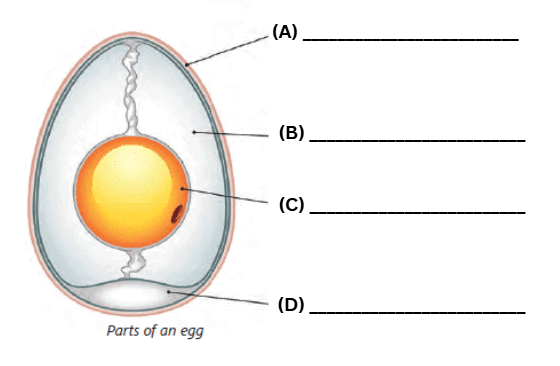
Q2: Fill in the blanks.
(i) The eggs of fish are hatched into _________.
(ii) _________ the yellow round part of an egg.
(iii) The _________ lays the biggest egg in the world.
(iv) _________ feed their babies with their own milk.
(v) The larva that hatches out of a butterfly egg looks like a worm. It is called a _________.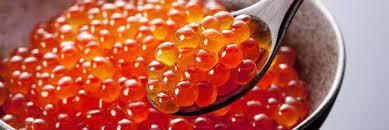
Q3: True or False.
(i) All the living beings do not reproduce their own kind.
(ii) All animals feed their babies with their own milk.
(iii) The young ones of a cat is puppy.
(iv) Mammals are warm-blooded.
(v) A frog goes through four stages in its life cycle.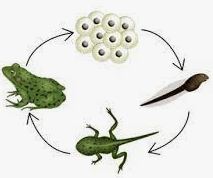
Q4: Multiple Choice Questions (MCQs).
(i) Which of the following is a method of asexual reproduction in animals?
(a) Fertilization
(b) Budding
(c) Mating
(d) Courtship
(ii) The male reproductive cell in animals is called:
(a) Ovum
(b) Zygote
(c) Sperm
(d) Embryo
(iii) The process of giving birth to offspring in animals is known as:
(a) Hatching
(b) Fertilization
(c) Reproduction
(d) Parturition
(iv) Which of the following is an example of an oviparous animal?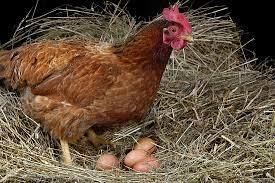 (a) Cow
(a) Cow
(b) Frog
(c) Cat
(d) Dolphin
(v) How do fish reproduce?
(a) By laying eggs on land
(b) By laying eggs in water
(c) By giving birth to live young
(d) By producing seeds
(vi) The process by which a tadpole changes into an adult frog is called:
(a) Metamorphosis
(b) Pollination
(c) Germination
(d) Photosynthesis
(vii) Which animal exhibits external fertilization?
(a) Human
(b) Dog
(c) Snake
(d) Frog
(viii) The pouch-like structure in which a kangaroo carries its young one is called:
(a) Nest
(b) Cocoon
(c) Pouch
(d) Burrow
(ix) Which of the following is NOT a method of asexual reproduction?
(a) Budding
(b) Binary fission
(c) Fragmentation
(d) Sexual reproduction
(x) In which animals does regeneration occur, allowing them to re-grow lost body parts?
(a) Birds
(b) Insects
(c) Starfish
(d) Mammals
Q5: Match the following

Q6: Answer the following questions.
(i) What is reproduction?
(ii) Who are mammals?
(iii) Name the smallest mammals.
(iv) Name two animals that lay their eggs in water.
(v) Name any five egg-laying animals.
(vi) Name two animals that do not take care for their young ones.
(vii) What are the life-stages of a butterfly?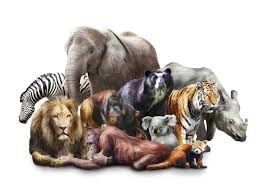
You can find Worksheets Solutions here: Worksheet Solutions: Reproduction in Animals - 2
|
48 videos|156 docs|34 tests
|
FAQs on Reproduction in Animals - 2 Class 4 Worksheet Science
| 1. What is reproduction in animals? |  |
| 2. What are the different modes of reproduction in animals? |  |
| 3. How does sexual reproduction occur in animals? |  |
| 4. What is asexual reproduction in animals? |  |
| 5. What are the advantages and disadvantages of sexual and asexual reproduction in animals? |  |
















